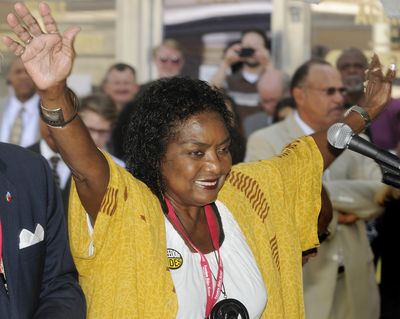Museum honors Freedom Riders
Famous bus station given new purpose

MONTGOMERY, Ala. – Freedom Riders who were attacked in Alabama’s capital city on May 20, 1961, returned 50 years later to be hailed as heroes and have a museum dedicated at the old bus station where they were confronted by an angry white mob.
U.S. Rep. John Lewis, D-Georgia, said he teared up Friday when he walked through the old Greyhound station where he was beaten and knocked unconscious.
“It says something about the distance we’ve come and the progress we’ve made in this state and nation,” Lewis said.
That change was evident in former Alabama Gov. John Patterson. In 1961, he called the Freedom Riders fools and agitators when they set out to integrate Southern bus stations. But the 89-year-old ex-governor welcomed them Friday and praised them for bringing needed changes.
“It took a lot of nerve and guts to do what they did,” Patterson said after meeting 10 Freedom Riders for the first time.
The Freedom Riders were mostly college students, blacks and whites, who set out on Greyhound and Trailways buses across the South to test a U.S. Supreme Court decision banning segregation in public transportation facilities.
After a firebombing near Anniston and threats and beatings from the Ku Klux Klan in Birmingham, U.S. Attorney General Robert Kennedy got a promise from Patterson to have state troopers protect the group’s bus from Birmingham to Montgomery. City police were supposed to take up the job once they crossed the city line.
Patterson kept his word, with state trooper cars and a helicopter guarding the bus. But when they reached Montgomery’s Greyhound station, the police were not there. Instead, an angry crowd fueled by Klansmen beat them and the journalists covering the event.
The attack in Montgomery prompted a court order against the Klan by U.S. District Judge Frank Johnson of Montgomery and led to new federal rules guaranteeing an end to segregation in all aspects of interstate travel.
The old bus station was slated for demolition in 1993 to make way for an expansion of the courthouse. U.S. District Judge Myron Thompson and Patterson advocated that it be spared because of its place in history. After it sat empty for many years, the Alabama Historical Commission developed the 3,000-square-foot museum with artwork, photos and descriptions of what happened and the impact it had.